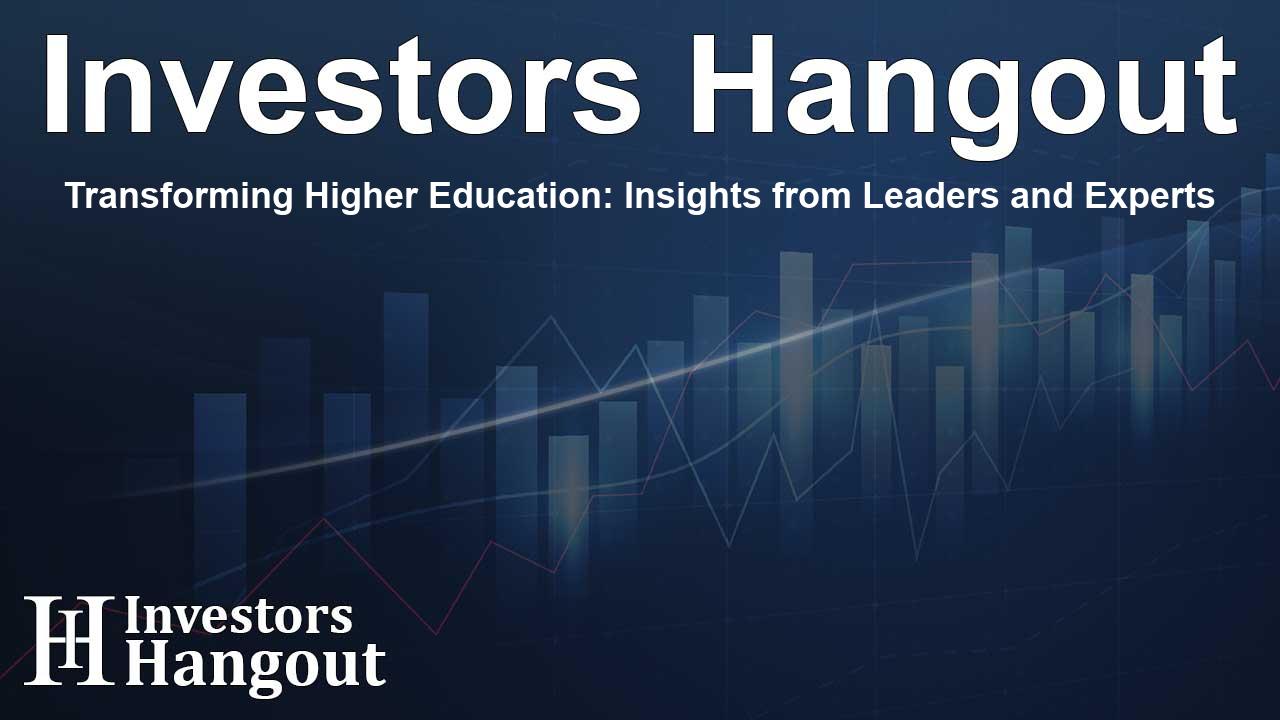Transforming Higher Education: Insights from Leaders and Experts

New Insights on Connecting Learning with Workforce Needs
In a rapidly changing world, higher education is undergoing a transformation. Recognizing the need for institutions to align educational outcomes with labor market demands, a recent whitepaper provides invaluable insights from experts in the field. This document, authored by Elliot Felix, a well-respected higher education thought leader, outlines effective strategies designed to bridge the gap between academic programs and workforce realities.
Key Strategies for Institutions
The whitepaper offers six actionable strategies that colleges and universities should adopt to enhance the alignment of learning with employment outcomes. These strategies are a culmination of insights gathered from leading figures in both higher education and workforce sectors, combined with findings from comprehensive national studies.
Firstly, institutions must understand the disruptive changes currently affecting higher education. By grasping the nuances of these shifts, colleges can better prepare to address the evolving needs of students and employers alike. The next step urges institutions to accurately identify and quantify the specific needs of students and employers, ensuring that educational offerings remain relevant and valuable.
Aligning Curriculum to Market Demands
Next, aligning curricula and competencies to meet employer expectations is critical. This step emphasizes the importance of developing academic programs that are not only academically rigorous but also meets the practical demands of the workplace. Additionally, faculty development plays a crucial role in this process; it is essential that educators are equipped to deliver the aligned curricula effectively.
Partnerships also emerge as a vital theme in the whitepaper. By collaborating with local businesses, educational institutions can create synergies that benefit both students and employers. Community partnerships can provide valuable insights into workforce needs, thereby allowing universities to tailor programs accordingly.
Integrating Real-World Experiences
Furthermore, the whitepaper highlights the importance of integrating work experiences into the educational journey. By offering students substantial opportunities for hands-on learning, institutions can equip graduates with the skills and competencies that employers are actively seeking.
The use of technology is underscored as a transformative element in connecting educational outcomes with job market requirements. Institutions are encouraged to leverage data analytics to assess skills trends and provide real-time insights for continuous improvement.
Real-World Applications and Results
Case studies included in the whitepaper illustrate how various institutions, such as Athens State University and George Washington University, have successfully implemented these strategies. These examples showcase how innovative partnerships and an evidence-based approach are closing the gap between academic learning and career readiness.
Elliot Felix's framework provides a pathway that promotes a more integrated higher education experience, one that not only enriches student lives but also enhances workforce participation. This is all done with the goal of ensuring that graduates are not only knowledgeable but also prepared for the challenges and expectations of the modern workforce.
Conclusion
As institutions strive to enhance educational outcomes amidst changing workforce dynamics, the insights provided by this whitepaper are critical. By understanding market demands, aligning educational programs, fostering community partnerships, and utilizing technology effectively, higher education can play an essential role in meeting the needs of both students and employers. The collaboration among educational institutions, leaders in workforce development, and technology innovators is pivotal.
Frequently Asked Questions
What is the main purpose of the whitepaper?
The whitepaper aims to align educational outcomes with workforce demands by providing strategic insights for higher education institutions.
What are the six key strategies outlined?
The strategies include understanding educational disruptions, identifying student and employer needs, aligning curricula, developing faculty, partnering with local businesses, and integrating work experiences.
How does technology play a role in higher education?
Technology is essential for analyzing skills data and anticipating workforce trends, delivering insights to students and faculty in real-time.
Which institutions are highlighted in the whitepaper?
Institutions such as Athens State University and George Washington University are featured as examples of effective implementation of the outlined strategies.
Who is Elliot Felix?
Elliot Felix is a higher education expert known for his work improving the student experience and aligning academic programs with workforce needs.
About The Author
Contact Olivia Taylor privately here. Or send an email with ATTN: Olivia Taylor as the subject to contact@investorshangout.com.
About Investors Hangout
Investors Hangout is a leading online stock forum for financial discussion and learning, offering a wide range of free tools and resources. It draws in traders of all levels, who exchange market knowledge, investigate trading tactics, and keep an eye on industry developments in real time. Featuring financial articles, stock message boards, quotes, charts, company profiles, and live news updates. Through cooperative learning and a wealth of informational resources, it helps users from novices creating their first portfolios to experts honing their techniques. Join Investors Hangout today: https://investorshangout.com/
The content of this article is based on factual, publicly available information and does not represent legal, financial, or investment advice. Investors Hangout does not offer financial advice, and the author is not a licensed financial advisor. Consult a qualified advisor before making any financial or investment decisions based on this article. This article should not be considered advice to purchase, sell, or hold any securities or other investments. If any of the material provided here is inaccurate, please contact us for corrections.
